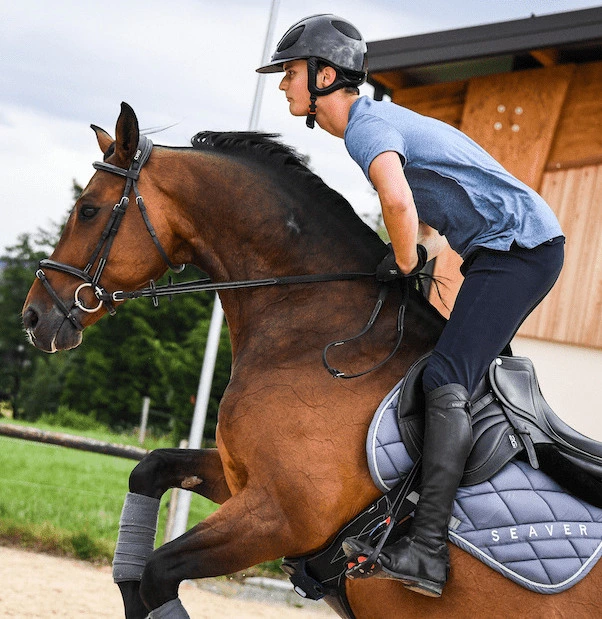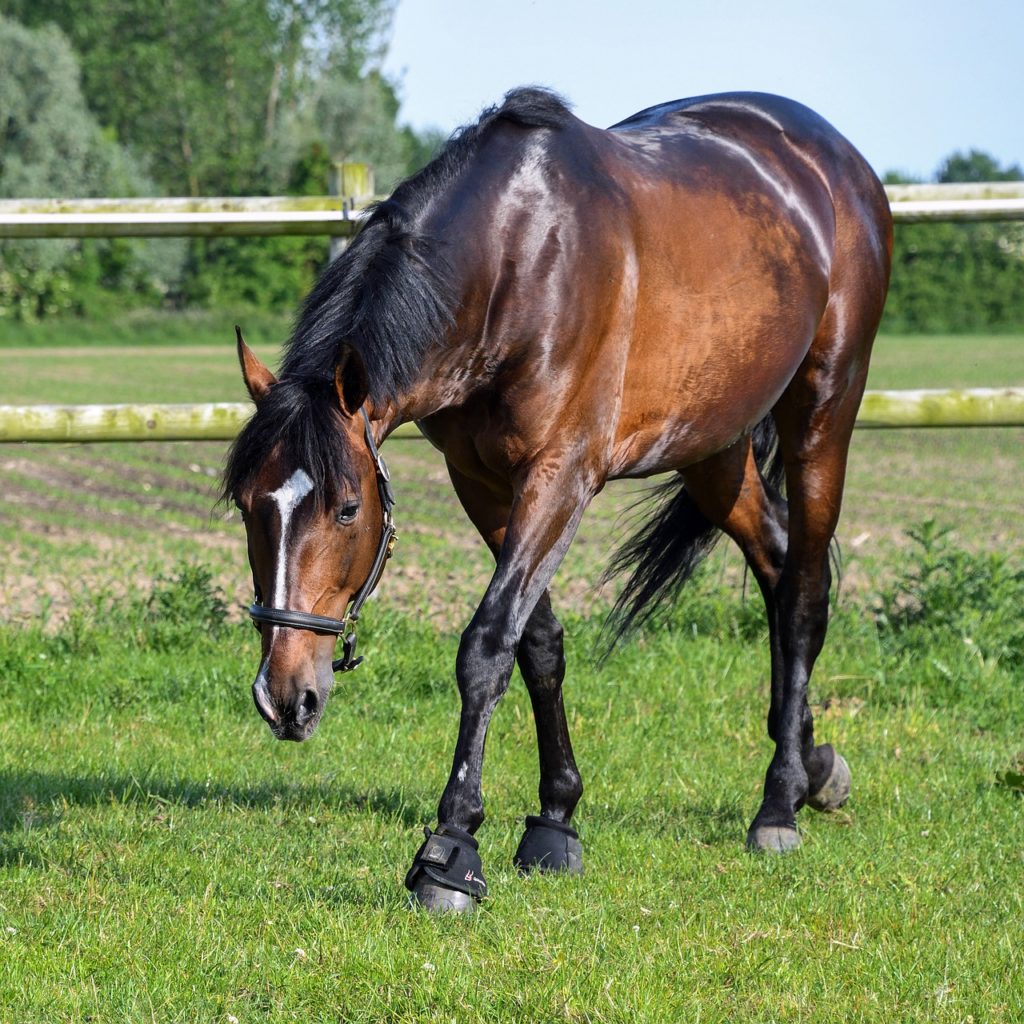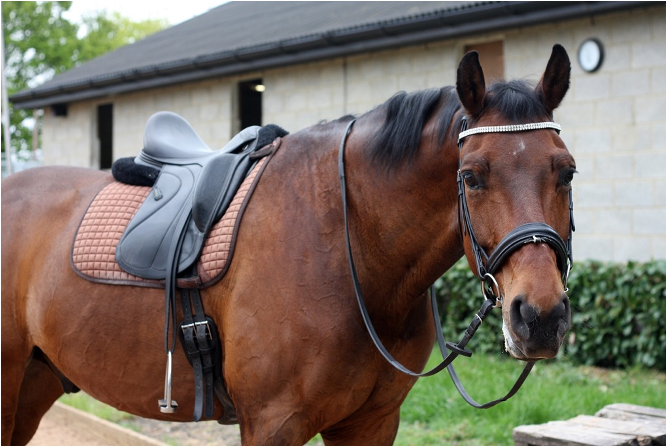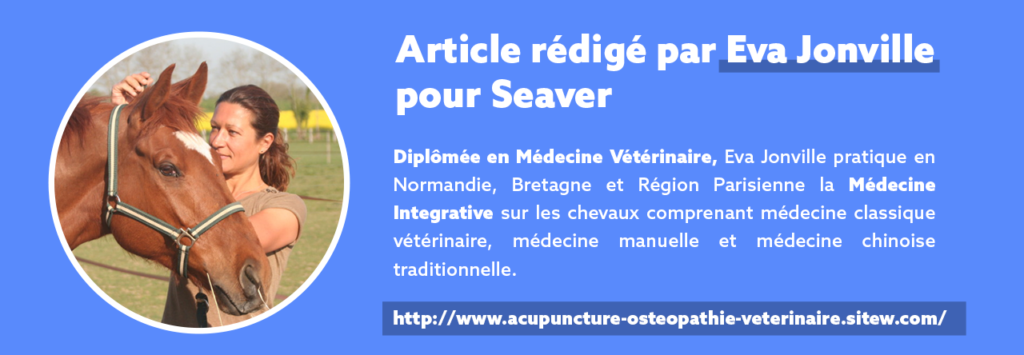-15% off your first order*.
Enter your email address to receive your promo code.
*except for the SAFEFIT airbag

Thursday, June 25, 2020
Not all horses are equal in terms of muscle tone. Some remain in good condition and toned with only two work sessions per week, others need to be worked daily. With no more than one or two days off per week to maintain a musculature that meets their sporting requirements. The case of Marbuzet, described below, is indicative of a horse in the second situation. For him, therefore, the 6 weeks of confinement have not been profitable and this horse lacks tone!
Find in this article the details of this consultation and solutions to remedy Marbuzet's locomotive problems.
The following article was written by Dr. Eva Jonville, a veterinarian. To better understand its meaning, she explains in the paragraph below the course of her consultations:
"Acupuncture is part of my primary approach and plays a central role in my consultations. They are built on a foundation of Traditional Chinese Medicine. I then use osteopathy or manual medicine, in a synergistic and complementary way. This is useful for removing musculoskeletal structural fixations when necessary.
Finally, depending on the disorders encountered, after an induction session with acupuncture needles, I can propose the implementation of a treatment with Chinese pharmacopoeia. This allows the effects of the needles to be prolonged over time, thus avoiding frequent consultations.
The diagnosis is carried out and refined according to 3 grids of readings:

The joint use of all these techniques potentiates them mutually for maximum results, the aim being to offer horses an integrative medicine ensuring a complete, complementary and coherent follow-up.
That said, there is no typical consultation: each horse guides me towards its needs, to which I limit myself so as not to upset the balance or the dynamics in place. It is a question of being succinct and precise in the choice of the information given to the organism and the technique(s) used.
In this way, the choice of treatment method is based on a precise individualized diagnosis and in-depth knowledge of therapeutic techniques, crowned by a continually nourished and enriched experience."
Marbuzet, a 7 year old gelding, meets the expectations of his owner perfectly. He goes out in show jumping competitions regularly. He also works hard on the flat and loves the outdoors. That said, he is a horse whose muscles need regular work to remain toned. 10 days in the pasture and his back is broken. When he returns to work after a period of rest, you must insist that he is stretched, that he raises his back and contracts his abdominals. His lateral movements are less satisfactory, and at the obstacle he gets closer to the bars and often makes "little feet". But now, after 6 weeks of confinement in the meadow, his owner fears that he has hurt himself or is suffering from arthritis (although there were no signs before confinement) because he is " very stiff in the hindquarters ".

In reality, Marbuzet shows a bending defect and instability of the stifles:
Because Marbuzet has not only lost his back and abs during this period of rest, he has lost overall muscle mass and tone. The muscle slings that consolidate his joints are less efficient, making him more unstable and uncertain in his movements. The quadriceps femoris in particular is lacking in its role of traction on the patella and no longer compensates for a probable laxity of the medial patellar ligament. The patella, when flexing the stifle, has difficulty in "unhooking" from the femoral tubercle. This is called partial patellar hooking.
Aq: Contraction of the femoral quadriceps causes external rotation of the patella and thus its "detachment" from the femoral tubercle.

The conservative treatment is to be preferred and is gradual in its implementation:
First of all, to restore muscle tone, particularly that of the femoral quadriceps through exercises on the flat, such as passing bars on the ground in a step, working on two tracks, transitions and elevation changes in a second step. Acupuncture can be very useful in restoring the balance of the joint and the tension of the medial patellar ligament.
As a second intention, if these measures are not sufficient after a few weeks, local injections can be performed at the medial patellar ligament and/or stimulate an influential acupuncture point on the medial side of the stifle. The farriery can also be adapted.
The critical stage, not described in Marbuzet, ispatella attachment, which may be persistent or intermittent but recurrent. The latter is characterised by the pathognomonic appearance of a leg locked in extension with the foot rubbing in a pinch. In this case, backing up is usually sufficient to unblock the patella, otherwise manipulation of the patella itself is necessary. If the horse is limping as a result of this persistent patellar impingement, treatment with NSAIDs (non-steroidal anti-inflammatory drugs) is instituted. In recurrent cases, if conservative treatment is not sufficient, surgical treatment may be considered.

But today, after 6 weeks of ground bars in addition to his usual activity, an adapted farrier's shop and some acupuncture needles, Marbuzet is back to long options at the obstacle and tackles the descents with a frank and confident step outdoors!
To overcome this lack of locomotion and gradually restore muscle tone, it is therefore advisable to carry out, over several training sessions, exercises giving priority to floor bars犀利士 step, two-track work and transitions.
The Seaver exercise catalogue offers a wide range of exercises in several disciplines, easily adaptable to the facilities available to the rider. Each exercise is accompanied by one or more explanatory diagrams, details on how to perform it, and advice.
In this case, two exercises in particular can contribute to an improvement in the physical condition of the horse.

This exercise, whose installation requires 5 or 6 bars on the floor, has several advantages. It pushes the horse to take care of itself, to be careful and to remain a minimum tonic. In order to perform this exercise correctly, it is necessary to pay attention to its impulse and straightness.

This second exercise, also composed of floor bars, nevertheless integrates in its stages the realization of transitions. It will allow you to gain control and confidence, and will encourage your horse to remain attentive. On your first passage of device, make a transition from walk to trot before crossing the last bar. Returning to the trot device after making a turn; then transition from trot to walk before the last bar on the ground and your exit from the device. Once this step has been correctly performed, it is possible to vary and bring the transitions closer together.
Given that the idea is to pass the bars on the ground at a walk to force the horse to flex the stifles and thus tone up the femoral quadriceps, just like the lateralization and medialization exercises for the hind legs, you can, on the voltes, alternate hips in/out, which allows you to work on straightness on the bars and two tracks in the figures.
These two exercises and all the team 's explanations and advice can be found for free on theSeaver application.
Marbuzet is not an isolated case, especially after this period of containment. It is a case of a constitution associated with a particular anatomical conformation that can be found in all breeds: constitution of the "Weak Spleen" horse in Traditional Chinese Medicine with a function of assimilation and use of nutrients that is not optimal, resulting among other things in a lack of muscle tone; and conformation of an open stifle joint with laxity of the medial patellar ligament. There is no actual joint fixation or injury of any kind in the case described above and the return to normal locomotion is achieved with the active participation of the rider. That said, the result depends ontheaccuracy and relevance of the diagnosis, as the resulting treatment may be radically different for clinical signs from a fairly similar rider's point of view.
We hope you enjoyed this article!
I'll see you very soon for an upcoming article,
Dr. Eva Jonville
